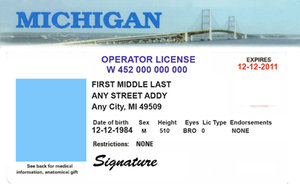 You heard it here first, drivers: If you aspire to be a motorcoach operator, you will need a Class B CDL with endorsements. Wait. “Class B”? “CDL”? “With endorsements”?
You heard it here first, drivers: If you aspire to be a motorcoach operator, you will need a Class B CDL with endorsements. Wait. “Class B”? “CDL”? “With endorsements”?
Let’s break it down, starting in the middle.
CDL
CDL stands for Commercial Driver’s License—the license you’ll need in order to become a motorcoach operator. In fact, if you want to operate any motor vehicle that weighs more than 26,000 pounds (10,000 if there’s a trailer attached); OR carries hazardous materials; OR transports 16 or more passengers … you will need a CDL. It’s been the law of the land since 1986, when the Commercial Motor Vehicle Safety Act was passed to ensure that the folks driving trucks and buses were qualified to do so. Some motorcoach companies require new hires to possess a commercial driver’s license prior to the application process. Other companies provide the necessary training and testing for a driver to obtain his or her CDL and endorsements. Motorcoach operators must also have a high school diploma or equivalent, and well as complete a training program.
Class B
There are three classes, or categories, of commercial driver's licenses—Class A, Class B, and Class C—determined by the type of vehicle a driver will be operating. (Class B is the one that motorcoach operators need.) Each class requires a general knowledge test, and the class allows the permit holder to be eligible to drive the corresponding commercial motor vehicle (CMV). The CDL knowledge test includes 50 general questions. Additional tests may be required depending on the class of the vehicle and application. All tests, both knowledge- and driving-based, must be administered by a certified examiner.
Here is a breakdown of the CMV classes:
- Class A includes any vehicle with a semi-trailer or a trailer with more than two axles. Also included in this group is any combination of vehicle with a gross vehicle weight rating of more than 26,000 pounds (provided that the gross vehicle weight rating* of the towed vehicle is in excess of 10,000 pounds).
- Class B includes any heavy straight vehicle with a gross weight rating greater than 26,000 pounds. This class also includes any vehicle towing another vehicle not in excess of 10,000 pounds.
- Class C includes any vehicle designed to transport 16 or more passengers (driver is included in this number). Class C also includes any vehicle used in the transportation of materials classified as hazardous in the Hazardous Materials Transportation Act.
CDL classes correspond to the CMV classes:
- Drivers holding a Class A permit are eligible to drive any Group A vehicle.
- Drivers holding a Class B permit are eligible to drive any Group B vehicle.
- Drivers holding a Class C permit are eligible to drive any Group C vehicle.
Endorsements
Olympic athletes get them. So do fantastic products. And commercial drivers can get endorsements, too. An endorsement—like an official seal of approval—signifies a driver’s ability to drive special types of vehicles. There are five different endorsements available:
- Hazardous Materials (H): This endorsement is required for any vehicle required to be placarded for hazardous materials. An additional 30-question test must be passed to earn this endorsement.
- Double/Triple Trailer (T): This endorsement is required for any vehicle towing two or more trailers. An additional 20-question test must be passed to earn this endorsement.
- Tank (N): This endorsement is required for any tank vehicle designed to transport more than 10,000 gallons. An additional 20-question test must be passed to earn this endorsement.
- Passenger (P): This endorsement is required for any vehicle designed to transport 16 or more persons, including the operator. An additional 20-question test must be passed to earn this endorsement.
- School Bus (S): This endorsement is required for driver license Class A, B, or C when operating a school bus with passenger. An additional 20-question test must be passed to earn this endorsement.
Many charter bus companies require a CDL license with a class B minimum and the passenger endorsement. A separate portion of the CDL test needs to be passed in order for an individual to drive a vehicle with air brakes. In order to schedule a CDL skills road test, the individual must possess a CDL learner permit for at least 30 days. The test must also be taken with the type of vehicle they are looking to earn their license and endorsements with. It is important to keep in mind that federal regulations require random alcohol and drug testing of bus drivers while on duty. Drivers will have their CDL suspended if they fail the test, or if they are convicted of a felony involving the use of a motor vehicle.
Make sure to research each specific company’s eligibility requirements prior to application. For more information regarding CDLs in Michigan, click here.
Sources
http://www.michigan.gov/sos/0,4670,7-127-1627_8669_53324---,00.html
http://dmv.dc.gov/service/commercial-driver-license
*Gross Vehicle Weight Rating (GVWR) is the suggested maximum total weight of the vehicle and load. This number is designated by whoever manufactured the vehicle.



